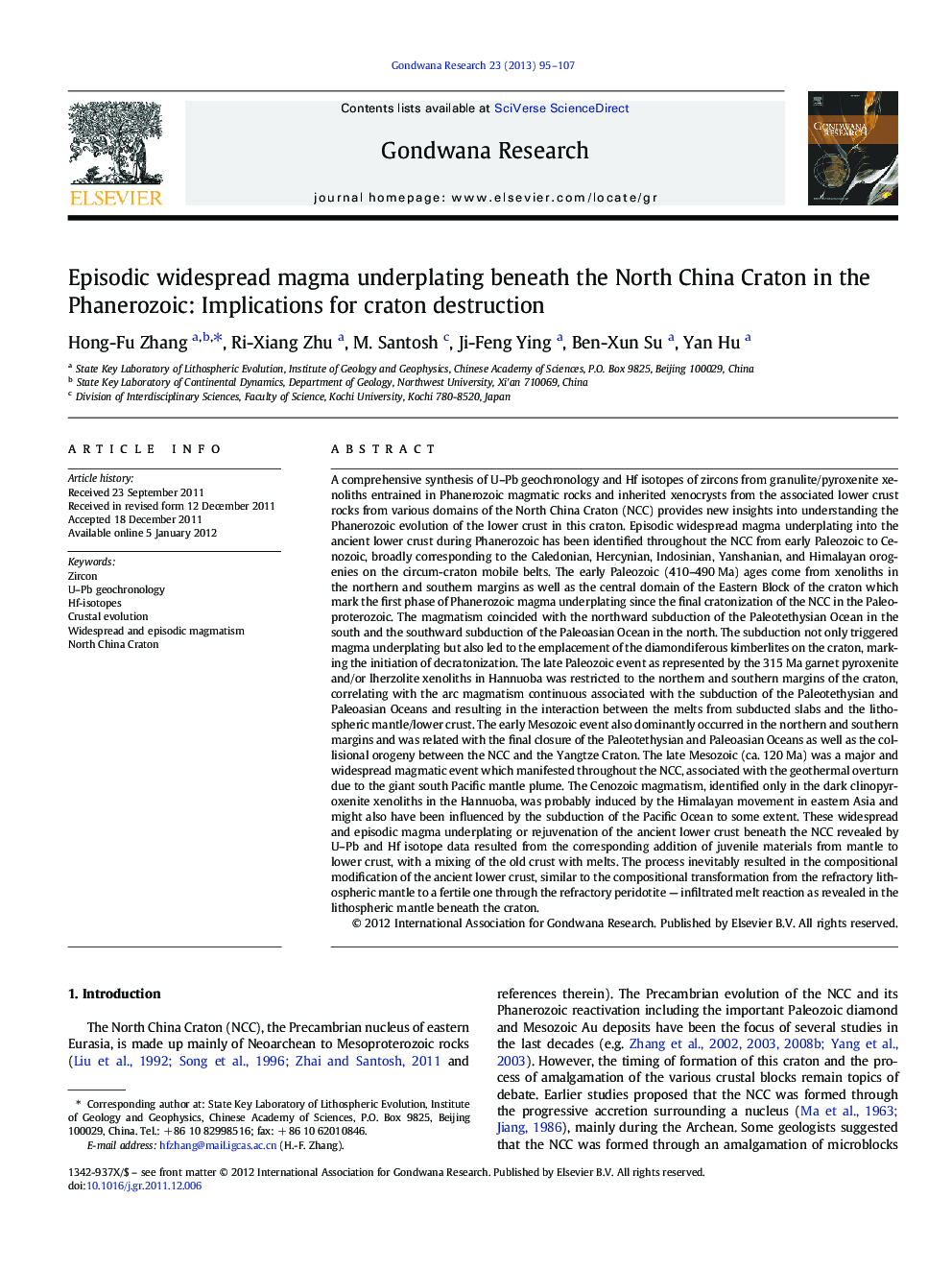| کد مقاله | کد نشریه | سال انتشار | مقاله انگلیسی | نسخه تمام متن |
|---|---|---|---|---|
| 4727535 | 1356382 | 2013 | 13 صفحه PDF | دانلود رایگان |
A comprehensive synthesis of U–Pb geochronology and Hf isotopes of zircons from granulite/pyroxenite xenoliths entrained in Phanerozoic magmatic rocks and inherited xenocrysts from the associated lower crust rocks from various domains of the North China Craton (NCC) provides new insights into understanding the Phanerozoic evolution of the lower crust in this craton. Episodic widespread magma underplating into the ancient lower crust during Phanerozoic has been identified throughout the NCC from early Paleozoic to Cenozoic, broadly corresponding to the Caledonian, Hercynian, Indosinian, Yanshanian, and Himalayan orogenies on the circum-craton mobile belts. The early Paleozoic (410–490 Ma) ages come from xenoliths in the northern and southern margins as well as the central domain of the Eastern Block of the craton which mark the first phase of Phanerozoic magma underplating since the final cratonization of the NCC in the Paleoproterozoic. The magmatism coincided with the northward subduction of the Paleotethysian Ocean in the south and the southward subduction of the Paleoasian Ocean in the north. The subduction not only triggered magma underplating but also led to the emplacement of the diamondiferous kimberlites on the craton, marking the initiation of decratonization. The late Paleozoic event as represented by the 315 Ma garnet pyroxenite and/or lherzolite xenoliths in Hannuoba was restricted to the northern and southern margins of the craton, correlating with the arc magmatism continuous associated with the subduction of the Paleotethysian and Paleoasian Oceans and resulting in the interaction between the melts from subducted slabs and the lithospheric mantle/lower crust. The early Mesozoic event also dominantly occurred in the northern and southern margins and was related with the final closure of the Paleotethysian and Paleoasian Oceans as well as the collisional orogeny between the NCC and the Yangtze Craton. The late Mesozoic (ca. 120 Ma) was a major and widespread magmatic event which manifested throughout the NCC, associated with the geothermal overturn due to the giant south Pacific mantle plume. The Cenozoic magmatism, identified only in the dark clinopyroxenite xenoliths in the Hannuoba, was probably induced by the Himalayan movement in eastern Asia and might also have been influenced by the subduction of the Pacific Ocean to some extent. These widespread and episodic magma underplating or rejuvenation of the ancient lower crust beneath the NCC revealed by U–Pb and Hf isotope data resulted from the corresponding addition of juvenile materials from mantle to lower crust, with a mixing of the old crust with melts. The process inevitably resulted in the compositional modification of the ancient lower crust, similar to the compositional transformation from the refractory lithospheric mantle to a fertile one through the refractory peridotite — infiltrated melt reaction as revealed in the lithospheric mantle beneath the craton.
Figure optionsDownload as PowerPoint slideHighlights
► Synthesis of zircon from xenoliths shows widespread magma underplating into the ancient lower crust during Phanerozoic.
► The 120 Ma thermal event was a significant one which resulted in the extensive destruction of the NCC.
► Episodic magma underplating is strongly related to the Phanerozoic tectonic evolution of the circum-craton orogenic belts.
Journal: Gondwana Research - Volume 23, Issue 1, January 2013, Pages 95–107
